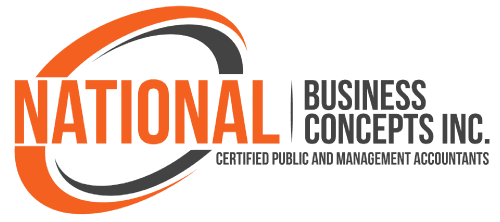
A conscientious and responsible manager must be concerned about the financial performance of his/her business. Such an appreciation will help him/her gauge whether the company is underperforming, failing, or excelling. For that purpose, he must decide on the appropriate metrics, in this instance financial ratios. There are around 20 to 25 key financial ratios, from liquidity ratios (Current Ratio, Quick Ratio, Cash Ratio, Operating Cash Flow Ratio, Working Capital Ratio,) profitability ratios, (Gross Profit Margin, Net Profit Margin, Return on Assets (ROA), Return on Equity (ROE), EBITDA Margin, and Return on Capital Employed (ROCE),) leverage ratios (Debt-to-Equity Ratio, Debt-to-Assets Ratio, Interest Coverage Ratio, Equity Multiplier, Fixed Charge Coverage Ratio,) efficiency ratios (Inventory Turnover, Receivables Turnover, Asset Turnover, Days Sales Outstanding (DSO), Payables Turnover,) to market valuation ratios (Price-to-Earnings (P/E) Ratio, Earnings Per Share (EPS), Dividend Yield, Price-to-Book Ratio,) for a manager’s selection.
However, outside of market valuation ratios, the manager may be able to rely on, a bare minimum, a little over a handful of ratios to assess profitability, liquidity, efficiency, and financial stability; thus, attaining a comprehensive view of overall financial health. Amongst the financial ratio he/she may consider are the liquidity, ratio i.e., current ratio; profitability ratios, i.e., gross profit margin, and net profit margin; leverage ratio, i.e., debt-to-equity ratio; and efficiency ratios, i.e., inventory turnover, and accounts receivable turnovers.
Selected Financial Ratios
The current ratio helps assess a business’s ability to meet short-term obligations using its current assets. Calculated as (Current Assets) / (Current Liabilities,) it indicates financial stability and liquidity. A ratio above 1 suggests the company has enough assets to cover liabilities, while a low ratio may signal liquidity risks. Small business managers use it to gauge operational efficiency, ensure smooth cash flow, and make financing decisions. However, excessively high ratios may indicate underutilized assets. Understanding the current ratio allows businesses to maintain financial health and plan effectively for growth.
The gross profit margin measures how efficiently a business produces goods or services while controlling direct costs. Calculated as (Revenue – Cost of Goods Sold) / Revenue, it reflects the percentage of sales revenue retained as profit before deducting operating expenses. A high margin indicates a strong pricing strategy and cost management, while a low margin suggests inefficiencies or rising production costs. Small business managers use this ratio to evaluate profitability, set pricing strategies, and improve cost control. Understanding gross profit margin helps businesses optimize operations and enhance financial performance.
The net profit margin measures a business’s overall profitability by indicating the percentage of revenue that remains as net income after all expenses, including taxes and interest. Calculated as (Net Income) / Revenue, it helps assess financial efficiency and long-term viability. A higher margin suggests strong cost control and revenue generation, while a low margin may indicate rising costs or inefficiencies. Small business managers use it to evaluate profitability trends, adjust pricing strategies, and manage expenses effectively. Understanding net profit margin helps businesses optimize earnings and ensure sustainable growth.
The debt-to-equity ratio assesses a company’s financial leverage by comparing its total liabilities to shareholders’ equity. Calculated as (Total Liabilities) / (Shareholders’ Equity,) it indicates the proportion of financing that comes from debt versus owner investment. A high ratio suggests higher reliance on borrowed funds, increasing financial risk, while a low ratio reflects stronger equity financing and a lower debt burden. Small business managers use this ratio to evaluate risk exposure, determine financing strategies, and maintain a balanced capital structure. Understanding it ensures sustainable financial planning and helps secure investor confidence.
The inventory turnover ratio measures how efficiently a business manages its inventory by tracking how often stock is sold and replaced within a given period. Calculated as (Cost of Goods Sold) / (Average Inventory,) it indicates sales performance and inventory management effectiveness. A high ratio suggests strong demand and efficient stock control, while a low ratio may signal slow-moving inventory or overstocking issues. Small business managers use this ratio to optimize purchasing, reduce holding costs, and improve cash flow. Understanding inventory turnover helps businesses enhance profitability and streamline operations.
The accounts receivable turnover ratio measures how efficiently a business collects payments from customers, reflecting cash flow strength and credit management. Calculated as (Net Credit Sales) / (Average Accounts Receivable,) it indicates how many times receivables are collected in a period. A high ratio suggests effective credit policies and quick collections, while a low ratio may signal delays or weak credit control. Small business managers use this ratio to improve cash flow, assess customer payment behaviours, and refine credit terms. Understanding it ensures timely collections and financial stability.
Conclusions
A responsible manager must monitor financial performance using key financial ratios to assess whether the business is underperforming or thriving. While there are many financial ratios, focusing on essential ones ensures a comprehensive view of financial health. Key to that end, the current ratio evaluates liquidity, gross profit margin and net profit margin to reveal profitability, the debt-to-equity ratio measures financial leverage, and inventory turnover, and accounts receivable turnover assess efficiency. These metrics help managers track cash flow, optimize operations, and ensure financial stability. Proper ratio analysis supports decision-making, allowing businesses to improve financial performance and sustain growth.
By Richard Thomas
Previous: Part I

